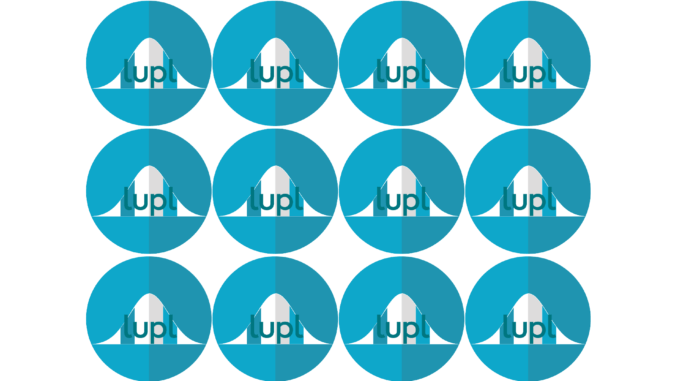
By Lupl.
If two years suffering a global pandemic has taught us nothing else, it’s that remote work will continue to have an impact on the way law is practiced for the foreseeable future. That said, lawyers seem more eager than many to get back in the office.
Why the rush?
According to Kastle Systems Back to Work Barometer, as of the start of December 2021 and across a survey of office space in 10 major U.S. cities, office workers have returned to the workplace at a 39.8% rate compared to their pre-covid baseline. But for legal, the return rate is considerably higher (66.7%).
So why is legal returning to in-person work so much faster than other industries? There are likely a number of factors at play. First, the legal profession relies upon person-to-person knowledge transfer to educate and upskill its next class of professionals. Schooling and books can only take a legal professional so far – in order to be truly skilled at the craft, one must practice their skills in the ‘real world’ and gather feedback from more experienced colleagues. A recent Major Lindsey & Africa study found that nearly half of respondents (48%) felt remote work during the pandemic had hindered professional development at their firms.
There may also be a multitude of operational reasons lawyers, particularly partners, are pushing for a return to in-person work. First among them may be related to business development and the ability to sell new work. While many firms have recently focused on blurring the lines between practice groups to serve clients in a more business-centric fashion, lawyers have to be aware of what skill sets they can offer their clients. And that’s hard to do when you may not have even met new colleagues. In fact, the same Major Lindsey & Africa study showed that a staggering 79% of partners said remote work was detrimental to their ability to get to know colleagues.
One external factor that may also be driving lawyers back to the office is the legal system’s historical reliance on paper documents. Even in jurisdictions where e-filing has become the norm, large documents may need to be physically accessed at the courthouse. And, mailing and in-person service rules means both lawyers and staff must be physically in the office for parts of their work.
Hybrid working is here to stay
But, does the eventual end of the pandemic (whatever that may look like) mean we go back to the old ways of working? We don’t think so.
Just last month, a major law firm announced that its U.S. lawyers are now able to work from anywhere, indefinitely, a move that we can expect to be followed by others down the road. At the same time, other firms in the UK and US have pushed back return to office dates on renewed COVID-19 concerns. And, we now have two classes of new lawyers who have barely worked a day in the office. Given this, the flexibility to work remotely will become a differentiator for some firms in attracting and retaining top talent. Expect almost every team to have someone “remote” on it.
The changing role of coffee and cookies
Clients, too, are driving the move to remote or hybrid working. Nicholas Bloom for Stanford’s Institute for Economic Policy Research (SIEPR) suggests that “about 70 percent of firms—from tiny companies to massive multinationals like Apple, Google, Citi, and HSBC—plan to implement some form of hybrid working arrangements.” No matter how firms decide to practice in the future, their corporate clients are likely to continue working remotely. This means that overnighting a hard drive of discovery data or hard copy documents for signature to a single address, or offering up shiny meeting rooms, excellent coffee and freshly-baked cookies, may no longer be the norm – instead, firms have to find ways to deliver and enhance every element of their service to clients working from many more locations around the world. All more effectively than their competitors.
Technology is the backbone upon which the ‘new normal’ will be built. According to 2021 Wolters Kluwer Future Ready Lawyer: Moving Beyond the Pandemic Report, law firms that adopted tech quickly during the pandemic profited while those who did not lagged behind. Just last month, Big Law juggernaut Kirkland & Ellis announced it would shorten the path for new lawyers to join firm partnership by one full year. One of the driving factors in their decision was the “increased responsibilities and experience gained in today’s environment.” Said another way, it’s clear Kirkland believes that its lawyers are getting the same level of experience 12 months’ faster. Has Kirkland figured out how to bend space and time? Probably not. Instead, their junior lawyers are likely benefiting from technology.
What’s next? The role of collaboration tools
As legal technologists, we should expect technology to become more foundational to legal each and every day. This will undoubtedly show up in areas where machines deliver faster and more accurate results. But, these types of technologies won’t solve for the professional development, and human interaction challenges that we see with remote work today. And, they won’t make it any easier for lawyers to deliver their services to geographically dispersed clients. Instead, effective collaboration tools will lead the way.
At Lupl, we’ve recognized that daily tasks like document sharing, communication, status reporting and work allocation are harder than they need to be. And, it has traditionally been difficult for law firms and their clients to connect within a single tool from both a licensing and compliance standpoint. There has been no solution in the legal market that is specifically designed to work as well between companies as within a company.
Effective collaboration with clients will be a key differentiator in the new normal. Consider how far legal has lagged behind other regulated industries in delivering on-demand information and status updates to its customers. Clients have 24/7 access to financial and healthcare services through modern digital technologies. They can get advice from their doctor and conduct complex financial transactions from the palm of their hands. But they still can’t find out about the status of their matter without picking up the phone and calling their lawyer?
Notwithstanding the inherent need for technology in the modern practice of law, there’s one major consideration when thinking about new tech – it has to be easy. That’s why, at Lupl, we have focused on using human-centric design principles to create an intuitive platform that delivers ROI on day 1, not 120. This means you’ll find functionality where you visually expect it to be and designed specifically to align with the way you work today. The results have been amazing. Lee Eng Beng, Senior Counsel and Chairperson of Rajah & Tann Asia, comments,
“Adoption has grown faster than anything we’ve experienced for any other legal technology platform. We’ve found that the simplicity of the user interface and the ability to integrate with our document management system have meant we’ve been able to get this rolled out across our firm quickly and without the need for heavy training.”
Lupl’s vision is to create a more open and connected legal world by making it easy for legal professionals and their clients to work together, within and between law firms, corporate legal departments and other organizations. As an open industry collaboration platform built specifically for law, we think we’re uniquely well-placed to take on the challenge. And we look forward to working with our customers in legal departments and law firms around the world as we all navigate this new normal together.
Try Lupl for FREE
If you’d like to try Lupl in your firm or legal department, you can sign up today in less than 60 seconds at www.lupl.com

[ Artificial Lawyer is proud to bring you this sponsored thought leadership article by Lupl. ]
“Clients have 24/7 access to financial and healthcare services through modern digital technologies. They can get advice from their doctor and conduct complex financial transactions from the palm of their hands. But they still can’t find out about the status of their matter without picking up the phone and calling their lawyer?”
Bingo! Contracts are the governing guidelines for the productive relationship and transaction relationship between two or more clients. While law firms might not be a dating service, they certainly are in the business of relationship management.
The technology exists where clients can and should be direct participants in the contract process, including AI-assisted collaborations. That process does not end with a signed contract! The signed agreement is the start of the productive process where trades are made and products are built.
CLM isn’t about managing contracts as much as it is about the governance of a relationship with a purpose to fulfill.